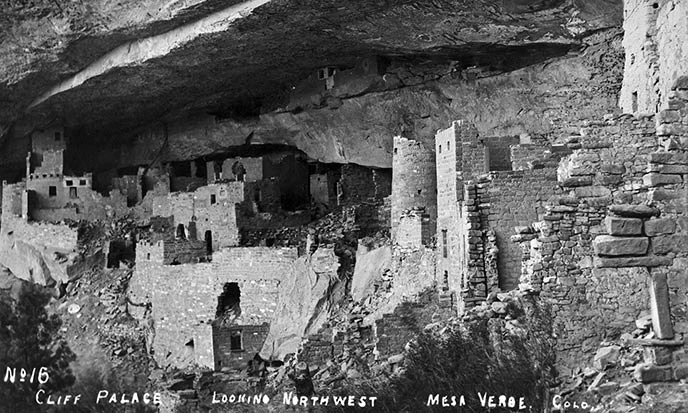
THOMAS MCKEE PHOTOGRAPH COLLECTION, MEVE 9084, TM-36 Centuries of Deterioration
With the establishment of Mesa Verde National Park in 1906, the despoliation of the late 1800s was replaced by an emerging preservation ethic determined to halt the damage. Through the efforts of Smithsonian archeologist Jesse Walter Fewkes, field methods designed to excavate and collect artifacts were modified to identify and understand the effects of unrestrained looting upon standing architecture, buried features, and archeological deposits. In addition, Fewkes realized the importance of preparing archeological sites for visitation. He believed it was only through direct experience, literally being able to walk through a cliff dwelling, that the American public could appreciate and support the preservation of Mesa Verde's archeological resources. To accomplish this goal, Fewkes, along with many of his contemporaries, invented the practice of ruins stabilization. Although certainly limited by the use of incompatible materials, construction techniques, and somewhat fanciful reconstructions, there seems little doubt that the history of ruins stabilization within Mesa Verde National Park fundamentally contributed to the development of contemporary Conservation Archeology. |
Last updated: April 21, 2025
